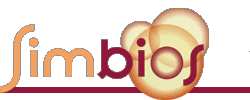|
Simbios Talk by Sam Flores, Stanford University, February 4, 2009 Title: RNA in Europe Abstract: I will also connect this work to that being done in European labs I visited in November. In particular, George Dickson of the University of London Royal Holloway is interested in modeling hybridization of small interfering RNAs to the dystrophin pre-mRNA, to find sequences of the former which can potentially cure Muscular Dystrophy. Julie Bernauer of INRIA Sophia Antipolis has created coarse grained potentials for RNA which we plan to integrate into RNABuilder. Marvin Siebert of the University of Uppsala's van der Spoel lab is studying conformational changes of very large engineered DNA Origami structures and is interested in generating a structural model to extrapolate its dynamics. Daniel Larsson of the same lab is interested in modeling the folding of the Tobacco Satellite Virus to understand other RNA genomes. Stefan Bienert of the University of Hamburg's Torda lab is computing dynamical trajectories of a pseudoparticle in sequence space to increase the stability of folded RNAs without changing secondary or tertiary structure, and is interested in testing the 3D realizability of the modified sequences. I will explain their work using materials the investigators have graciously provided, then explain how our work is connected. |
Feedback ---- Collaborations ---- Career ---- Administration ---- Contact |

